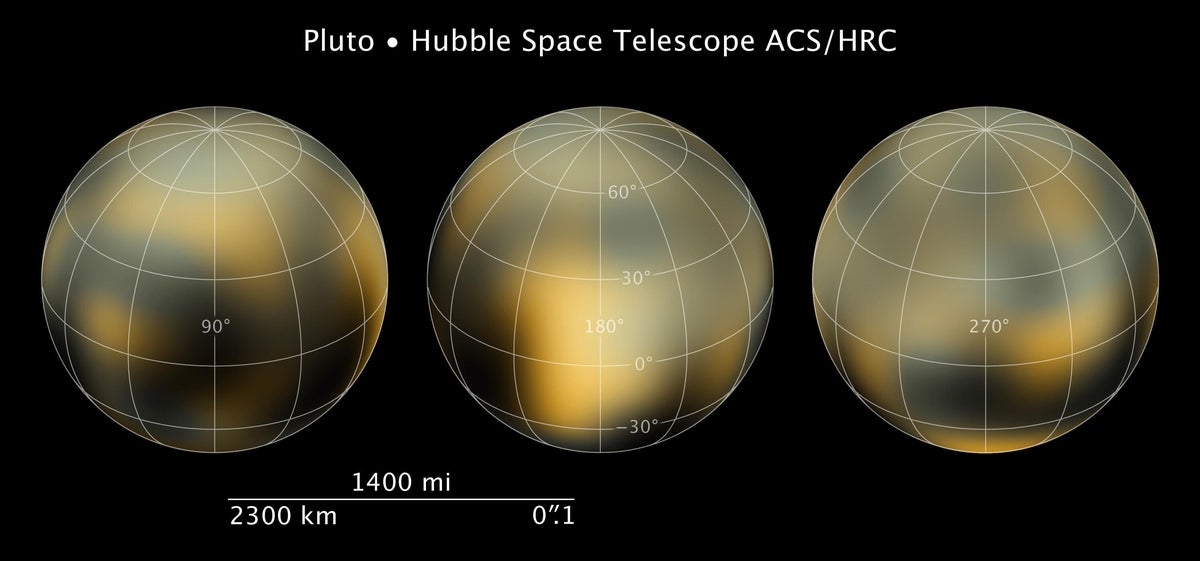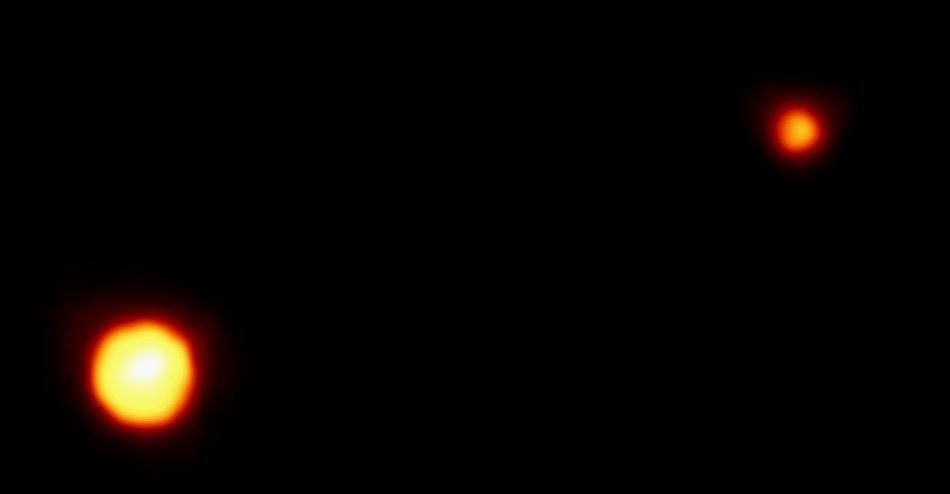Gallery: Most-detailed images of Pluto revealed
Image 1 of 11
A set of photos taken by the Hubble space telescope in 2002 and 2003 show the most detailed look at the former planet Pluto. The photos show an icy and dark molasses colored surface that changes with the seasons.
NASA says the dwarf planet is so small and far away from Earth that it’s like trying to examine details in a soccer ball 40 miles away. These will be the best images available of Pluto until 6 months before the New Horizons spacecraft flies by the dwarf planet in 2015.
Credit: NASA, ESA, and M. Buie (Southwest Research Institute) (Click on the photo for greater details.)
The Hubble images show different views of Pluto’s surface as it rotates. The images, originally just a few pixels across, are the result of more than four years and 20 computers operating continuously and simultaneously.
Credit: NASA, ESA, and M. Buie (Southwest Research Institute) (Click on the photo for greater details.)
Of most interest are the bright spot in the middle image that indicates carbon monoxide frost.
Credit: NASA, ESA, and M. Buie (Southwest Research Institute) (Click on the photo for greater details.)
The top image was taken in 1994 by the European Space Agency’s Faint Object Camera. The bottom image was taken in 2002-2003 by the Advanced Camera for Surveys. Of note is the brighter north polar region and the darker south polar region in the more recent image.
Credit: NASA, ESA, and M. Buie (Southwest Research Institute) (Click on the photo for greater details.)
According to NASA, “The Hubble images are a few pixels wide. But through a technique called dithering, multiple, slightly offset pictures can be combined through computer-image processing to synthesize a higher-resolution view than could be seen in a single exposure.”
“This has taken four years and 20 computers operating continuously and simultaneously to accomplish,” says Marc Buie principle investigator of the Southwest Research Institute in Boulder, Colo.
Credit: NASA, ESA, and M. Buie (Southwest Research Institute) (Click on the photo for greater details.)
Pluto and its largest moon Charon.
Dr. R. Albrecht, ESA/ESO Space Telescope European Coordinating Facility; NASA
In 2005 the Hubble space telescope discovered two new moons, later named Nix and Hydra, orbiting Pluto.
NASA, ESA, H. Weaver (JHU/APL), A. Stern (SwRI), and the Hubble Space Telescope Pluto Companion Search Team
In January 2006 the New Horizons spacecraft was launched on a mission to fly by Pluto in 2015. This shows its location on February 4, 2010. One AU is the average distance between the Sun and Earth, about 93 million miles or 149.6 million kilometers.
An overhead view of New Horizons’ route as of February 4, 2010.
Pluto as seen in Hi-Def from the New Horizons spacecraft in January 2008.
Credit: NASA/Johns Hopkins University Applied Physics Laboratory/Southwest Research Institute
On its way to Pluto, in May 2007 the New Horizons spacecraft passed through the Jupiter system to gain speed and test out its photo gear. Here’s the closest look at the Little Red Spot, a new storm recently formed on the giant planet.
Credit: NASA/Johns Hopkins University Applied Physics Laboratory/Southwest Research Institute










